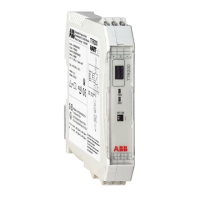
Do you have a question about the ABB TTR200 and is the answer not in the manual?
| Display | LCD |
|---|---|
| Housing Material | Aluminum or Stainless Steel |
| Output Signal | 4-20 mA |
| Weight | 1.5 kg |
| Communication | HART |
| Ambient Temperature Range | -40 to +85 °C (-40 to +185 °F) |
| Electrical Connection | M20 x 1.5 or 1/2 in. NPT |
| Protection Class | IP66 |
| Accuracy | ±0.1 % of span (typical) |
Overview of safety aspects to be observed for the operation of the device.
Specifies the device's intended applications and usage guidelines.
Details operational parameters and constraints for the device.
Outlines manufacturer's warranty terms and limitations.
Explains various labels and warning symbols on the device.
Defines operator responsibilities concerning device use and environment.
Specifies requirements for personnel performing installation and maintenance.
Instructions for returning devices for repair or recalibration.
Guidance on environmentally friendly disposal of the device.
Safety guidelines for transporting the device.
Safety precautions for electrical connections.
Guidelines for safe operation of the device.
Hazards and procedures for device deinstallation.
Details approvals for using the transmitter in explosion-protection areas.
Specifies the IP protection level for adapters.
Precautions against electrostatic charging in Zone 0.
Guidelines for grounding intrinsically safe circuits.
Requirements for intrinsically safe circuit interconnections.
Methods for installing transmitters in explosion-protection areas.
Further details on explosion-protection aspects.
Specifies suitable conductor materials and cross-sections for power supply cables.
Illustrates pin assignments for supply voltage and sensor connections.
Presents a functional block diagram of the transmitter.
Describes the standard electrical connection setup.
Details special interconnections for hazardous areas.
Methods for configuring the transmitter, including HART communication.
How to enable/disable hardware and software write protection.
Procedures for adjusting sensor errors via DTM.
Adjusting the analog output for accurate display.
Explanation of the three HART variables and their assignments.
Configuring HART tag and device address for identification.
Details device parameters and their effective ranges.
Lists default parameter values set at the factory.
Information on configuration changes and notifications.
Interpretation of diagnostic LEDs for fault signaling.
General guidelines for maintenance and repair.
Instructions for cleaning the device exterior.
Safety specifications for intrinsically safe applications in Zone 0.
Safety specifications for non-incendive applications in Zone 2.
Specifications for input signals, resistance, and thermocouples.
Specifications for output signals, error currents, and simulation modes.
Details on power supply requirements, ripple, and undervoltage detection.
Environmental operating and storage conditions.
EMC compliance standards and testing.
Information on electromagnetic interference shielding.
List of related documentation such as commissioning instructions and data sheets.
Details CE and Ex approvals and relevant directives.